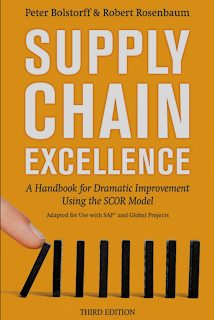Getting Sales & Marketing on Board with S&OP

Getting Sales & Marketing on Board with S&OP Talking recently with my S&OP mentor, Bob Stahl, he mentioned that at a recent conference on forecasting, he heard the keynote speaker say, “…we should spend less time trying to precisely predict the future, and more time preparing for its inevitable variability.” This statement got me to thinking: the reason Executive S&OP has gotten such traction is that it does just that; it provides a tool that allows companies to better see the future with its uncertainty and variability in a way that they can better prepare for it. Executive S&OP not only looks at the demand side of the business but converts that picture into resource needs and financial consequences, without knowing full granular detail for the full horizon. Here are some of the things that make that possible: Using “Market-Facing” Family definitions enables correlation to extrinsic market indicators resulting in a more relia...


